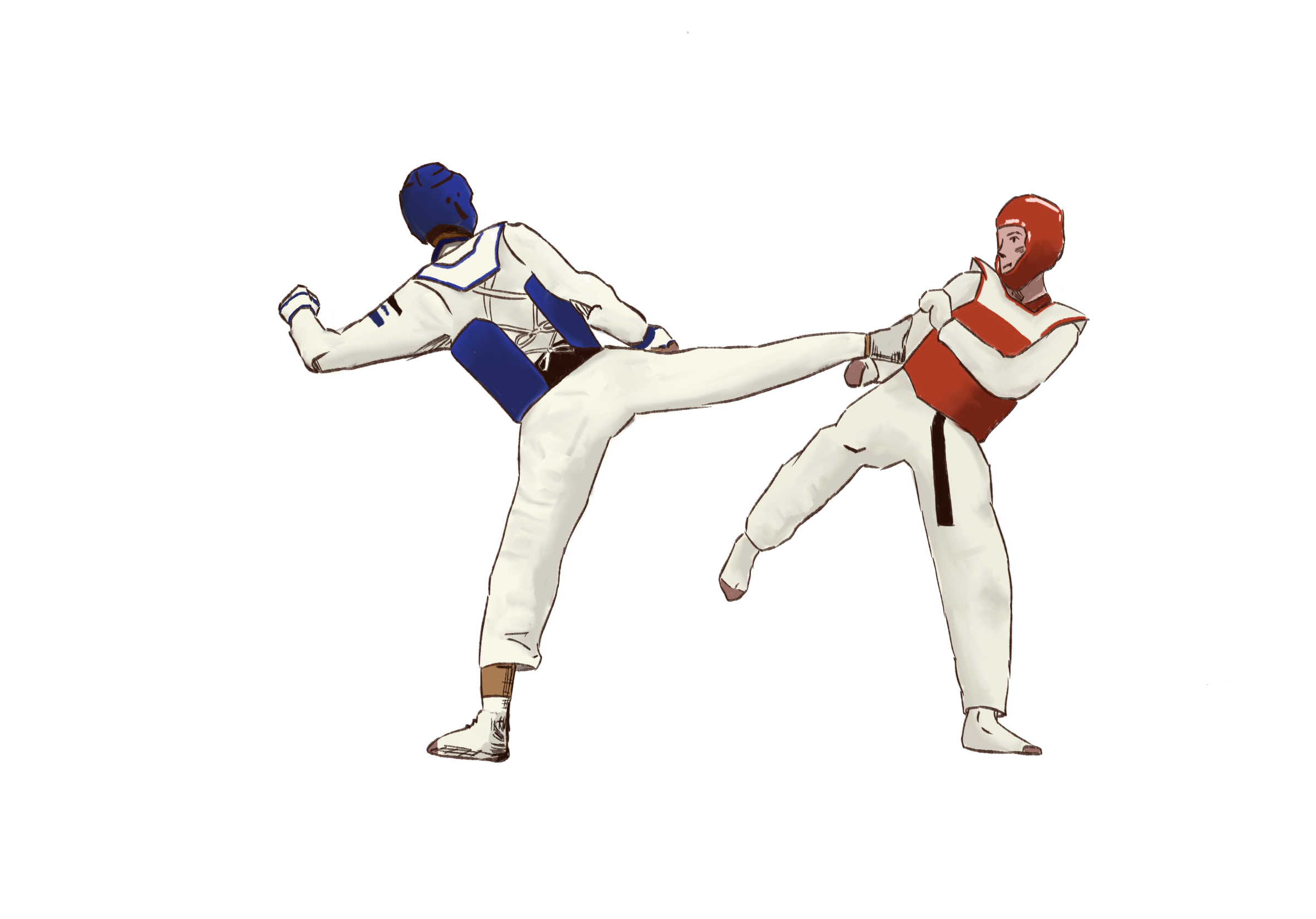Self-defense and martial arts kick up a storm
September, 2024
Many are interested in martial arts for self-defense, while others are interested for their physical and mental benefits associated with them. Marginalized groups such as women, people of color, and LGBTQ+ people feel the greatest pressure to protect themselves and therefore to learn self-defense and other such skills. However, United States gyms and dojos are not always the most welcoming. With that in mind, is it worth it to learn martial arts?
According to Psychology Today, many people do martial arts for their physical and mental benefits, as they help build strength and flexibility while also instilling important life lessons about discipline, confidence, and responsibility.
Taekwondo practitioner Noah Lee ’27 agrees, emphasizing that martial arts are especially good for building mental strength.
“[Taekwondo is] definitely useful in terms of feeling safer and more confident about yourself. [Martial arts is] definitely something that can boost your confidence, make you stand up straighter,” Lee said.
On the other side of the coin, bring more positives to light, fellow taekwondo player Paula Kutin ’27 highlights the physical benefits of martial arts.
“I’m learning how to defend myself quickly; my reaction speed is up, and [I’m less afraid],” Kutin said.
Kutin also touches on martial arts’ usefulness in self defense, adding that even the basics of martial arts can be helpful in bad situations.
“If someone were to attack me and I were to get into a good sparring stance, my hands are at the ready. even just being prepared might scare off someone,” Kutin said.
Although martial arts have many proven benefits, gyms and dojos, especially in the United States, have historically not been welcoming to many demographics. According to a 2022 report by Gymdesk, about 73 percent of martial arts practitioners are straight, white men. This environment can discourage marginalized groups like women, people of color, and LGBTQ+ people from practicing martial arts.
Thus, many marginalized people who want to learn martial arts end up turning to self-defense groups. Although lacking the historical prestige of martial arts, self-defense classes can teach similar physical and mental skills, from attacks and deflections to mental preparation and awareness in dangerous situations.
One such group at PHS is the Sexual Assault Awareness and Prevention Club (SAAP). Although SAAP is mostly focused on spreading awareness about assault, the club is currently developing more interactive programs, namely a self defense class. SAAP co-leader Maya Hagt ’25, who is a former martial artist, believes that self-defense classes are crucial in assault awareness and prevention.
“I’ve actually attended self-defense classes and I think they are really excellent because they show you how to utilize your surroundings, yourself, and anything you have with you in the case of a surprise attack,” said Hagt. “I think it’s a really excellent way for you to be better prepared if the worst does happen.”
Though Hagt points out that self-defense classes are a great tool for people in groups at higher risk of assault to try, she also acknowledges the fact that martial arts can be a very tough space to enter, especially for members of marginalized groups.
“I think that, because [martial arts are] so hypermasculine, it’s important for women to be in these spaces, but it shouldn’t be a burden on women [or other vulnerable groups] to stand up for themselves in those spaces,” Hagt said.
Fortunately, it seems as though martial arts spaces in theUnited States are slowly but surely becoming more diverse and accepting, something Kutin says she has observed.
“[My dojang] is diverse; it lets anyone in ... I have friends there who are five; I have friends there who are 50. [In terms of] taekwondo masters, there are ladies and guys,” Kutin said.
Martial arts gyms and dojos are also increasingly including special self-defense classes as parts of their program to create an environment where people are encouraged to learn how to defend themselves, with the option to learn other aspects of martial arts if they want to. These kinds of places make martial arts gyms more welcoming to marginalized groups who are looking to learn those skills, inviting diversity and building stronger communities — a trend that is likely to continue across the United States.